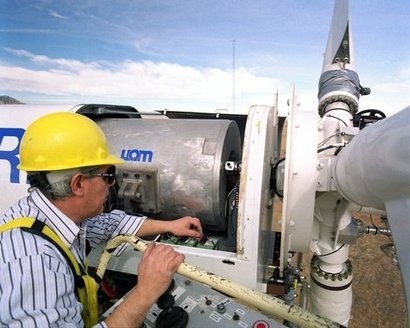
The process was first developed by research student Wenqu Chen and uses ultrasonic waves to measure the load transmitted through a ball bearing in a wind turbine. The stress on the turbine is recorded enabling engineers to forecast its remaining service life.
When a bearing is subjected to a load, its thickness is reduced by a small amount due to elastic deformation and the speed of sound is affected by the stress level in the material. These effects in turn change the time of flight of an ultrasound wave through a bearing. The new process developed by Chen is the only way to directly measure the transmitted load through the rolling bearing components. It uses a custom-built piezoelectric sensor mounted in the bearing to measure the time of flight and determine the load. This sensor is less expensive and significantly smaller than currently available, making it suitable for smaller turbines. It can also provide a better prediction of the maintenance needed, thereby saving money in servicing costs.
“This technique can be used to prevent unexpected bearing failures, which are a common problem in wind turbines” said Professor Rob Dwyer-Joyce, co-author of the paper and Director of the Leonardo Centre for Tribology at the University of Sheffield. “By removing the risk of a loss of production and the need for unplanned maintenance, it can help to reduce the cost of wind energy and make it much more economically competitive.”
The new technology has been validated in the lab and is currently being tested by Ricardo at the Barnesmore wind farm in Donegal, Ireland. Ricardo hopes it can be used in the future inside monitoring systems for other turbines.
The research from the project has now been published in the journal Proceedings of the Royal Society A.
For additional information:

